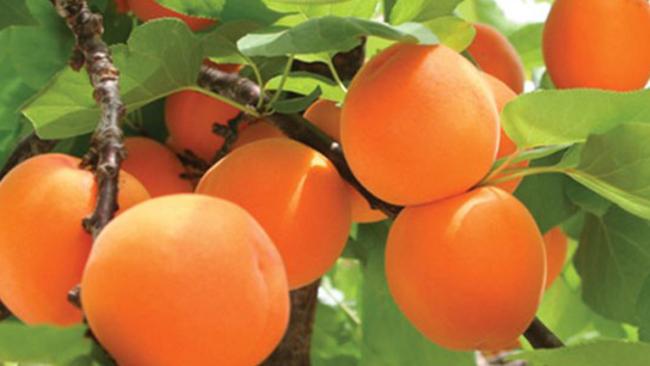Apricot espalier: drive your fruit up the wall
Espalier, training trees to grow along a flat plane such as a wall, can give you more fruit.

Is it possible to espalier apricot trees?
M. Wallis, by email
Espalier is the practice of training trees to grow along a single, flat plane, often against a wall. Training branches horizontally increases the number of fruiting spurs so it’s good for productivity and keeps fruit trees to a manageable size. Different fruit trees suit different styles or patterns; apricots do well as fans, which are easier to maintain and more productive than other styles. Dwarf and semi-dwarf trees are best to espalier. Flemings.com.au has a useful guide.
Recently you gave some really good tips for using coffee grounds. Is there any benefit in old tea leaves? Is it true they’re good for roses?
Derani Buncer, Sydney
Tea leaves are slightly acidic and contain 3 per cent to 4 per cent nitrogen and 0.1 per cent to 0.2 per cent phosphorus and potassium. That’s a comparatively high level of nitrogen, which promotes leafy growth. Roses also need high phosphorus and potassium in a balanced NPK fertiliser. Other elements in tea include aluminium, fluorine and manganese, which potentially could harm plants in high doses. You can use tea leaves on any plants in small doses or add them to compost.
I put my palm fronds through a shredder but wonder if it’s best not to use the mulch around the original plant. It seems almost like cannibalism to me. Is it an issue?
Susan Heappey, by email
It’s natural for the fallen leaves and branches of plants to accumulate at their bases, recycling nutrients and organic matter. Shredding fronds for mulch is a good practice but avoid using any diseased material.
What could I plant in a narrow, north-facing strip between my house and a lane? Upright, 2m to 3m tall, low maintenance and flowering would be great.
Mary Brown, Dorrigo, NSW
If the position is protected from the frosts Dorrigo can experience, blueberry ash (Elaeocarpus reticulatus) has slender form and flowers, plus berries, and can be pruned to your desired height. Grumichama (Eugenia brasiliensis) produces delicious berries and takes light frosts. It or pineapple guava (Feijoa sellowiana) can make an edible hedge. Natives include a new slender bottlebrush, Callistemon ‘Slim’, Banksia spinulosa or Grevillea ‘Misty Pink’. Deciduous Rose of Sharon (Hibiscus syriacus) is upright with lovely summer flowers.
Send questions to: helenyoungtwig@gmail. com or Helen Young, PO Box 3098, Willoughby North, NSW 2068. helenyoung.com.au.
The best question for July wins a hamper of Gardeners Therapy Hand and Body Care products worth $130 from homewares distributor Supertex (supertex.com.au).



